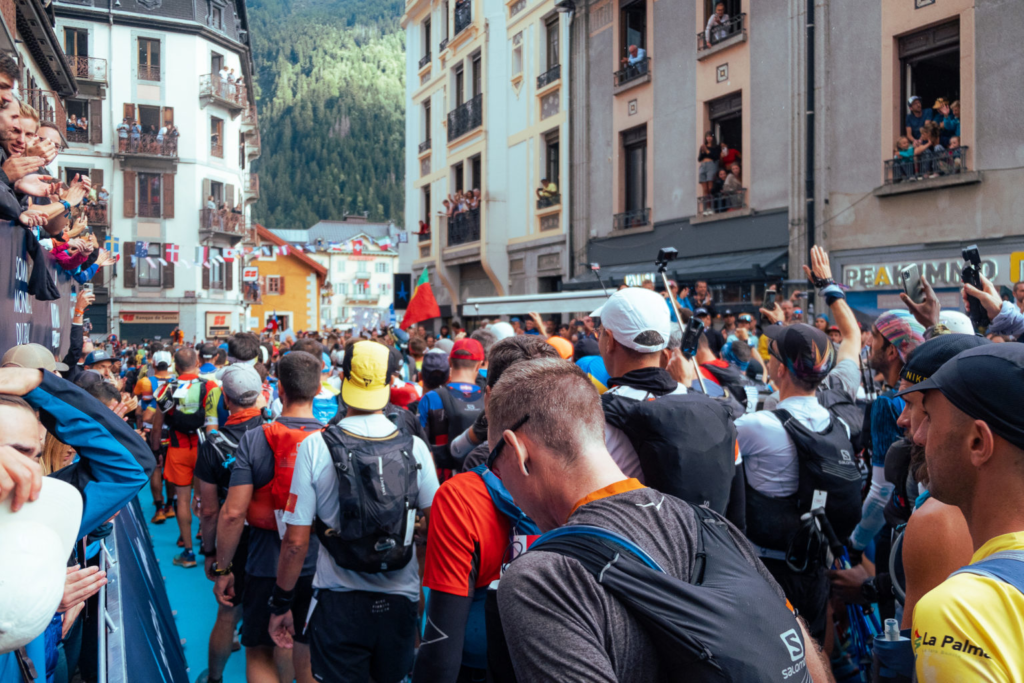
The UTMB® cut-off times are an important factor for trail runners taking on the adventure around Mont-Blanc. They’re not there to discourage participants but to ensure safety, logistics, and smooth organization of the event. Here’s everything you need to know about the time limits to respect.
Contents
What is a cut-off time and why is it implemented?
A cut-off time is a time limit set at a specific checkpoint on the course. If a runner arrives after the defined time, they are disqualified—even if they still feel good. These times are specified for each aid station or key checkpoint.
They are put in place for several reasons:
- Runner safety: to avoid participants being isolated at night or in bad weather.
- Volunteer management: to limit how long support teams are stationed out on the course.
- Race flow: to ensure smooth progression between fast runners and those at the back of the pack.
- Maximum race time: the UTMB® allows up to 46h30 for the main event. The cut-offs are based on this total duration.
What are the UTMB® cut-off times?
For the UTMB® (170 km / 10,000 m D+), cut-off times are set along the UTMB course, based on technical difficulty, elevation, and aid station locations.
Each year, the Runner’s Guide provides the exact times for that edition, but here is a general idea of the time limits at key checkpoints (based on a typical edition):
| Checkpoint | Km | Estimated cut-off time |
|---|---|---|
| Les Contamines | ~31 km | 6h30 of race time |
| Courmayeur | ~80 km | 21h of race time |
| Champex-Lac | ~124 km | 32h of race time |
| Vallorcine | ~153 km | 42h30 of race time |
| Finish in Chamonix | 170 km | 46h30 of race time |
Important: what matters is the departure time from the checkpoint, not the arrival time. If you reach it just before the cut-off, you must leave immediately.
How to anticipate cut-off times?
Choose a realistic pace
Some runners prefer to maintain a time cushion to avoid stressing about cut-offs during the race.
However, be careful not to start too fast and burn out later. It’s better to aim for a steady effort, especially until Courmayeur. Don’t hesitate to use the Livetrail app to simulate your time estimates at each checkpoint.
Analyze the cut-offs section by section
Break your race into segments between aid stations and check whether you’re ahead or near the UTMB cut-off limits. Load the UTMB GPX track onto your GPS watch. Plan ahead: don’t linger too long at some stations, and take more time at others when needed.
For example, the first aid station at Saint-Gervais is mostly for water refill. You can take more time at Les Contamines since you’ll soon be heading into the night until Courmayeur. If it’s cold, don’t stop too long at night aid stations.
Take more time at Courmayeur—around the halfway point—to properly recover, especially since you can access your drop bag there.
Train with long runs in real conditions
The best way to stay ahead of UTMB cut-offs is to train properly: accumulate elevation gain, handle technical descents, and practice night running. Also, be prepared with gear in case of bad weather to avoid losing precious time changing clothes or setting up equipment.
Some official resources
To get the up-to-date schedule for the edition you’re running (sometimes the route changes a few days before the race):
- The UTMB® Runner’s Guide (PDF available each year)
- The official UTMB® Mont-Blanc website, specific to each race
- The UTMB® live mobile app (updated cut-offs, live tracking)
Respecting UTMB® cut-off times comes down to training, strategy, and anticipation. If your goal is to finish the UTMB®, monitor your timing, adjust your pace, stay aware of your condition—and above all… enjoy this one-of-a-kind adventure around Mont-Blanc.